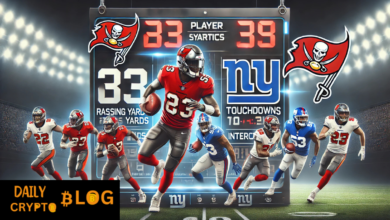Conquer the Course – Your Ultimate Guide to the Dallas Marathon

Introduction to the Dallas Marathon
The Dallas Marathon is one of the most iconic long-distance running events in Texas, attracting thousands of runners and spectators annually. Established in 1971 as the White Rock Marathon, the event was later renamed to reflect its deep ties to the city of Dallas. This marathon not only challenges runners physically but also showcases the vibrant culture and scenic beauty of the city. Over the years, the Dallas Marathon has grown into a multi-day event that includes a variety of races to accommodate runners of all skill levels, from first-time participants to seasoned athletes.
What sets the Dallas Marathon apart is its unique blend of urban and natural landscapes. Runners experience a diverse course that weaves through the heart of Dallas, passing iconic landmarks like the Margaret Hunt Hill Bridge and White Rock Lake. The event also has a charitable mission, with proceeds supporting the Texas Scottish Rite Hospital for Children. This combination of athleticism, community spirit, and philanthropy makes the Dallas Marathon a standout event in the running world.
Key event details include a range of race options to suit different fitness levels and goals. Participants can choose from the full marathon (26.2 miles), half marathon (13.1 miles), a relay race, and even a fun run for kids. The event typically takes place in December, offering a cool and comfortable climate for runners. Whether you are running for a personal best or simply to enjoy the journey, the Dallas Marathon promises an unforgettable experience.
Preparing for the Dallas Marathon
Preparation is key dallas marathon to a successful marathon experience. Whether you’re a first-time marathoner or a seasoned runner, having a comprehensive training plan can make a significant difference. Ideally, your training should begin 16-20 weeks before race day, incorporating a mix of long runs, speed work, and rest days. Beginners may start with shorter distances and gradually build up mileage, while experienced runners can focus on improving pace and endurance. Consistency is crucial, and following a structured plan helps you stay on track and avoid overtraining.
Equally important is selecting the right gear and maintaining proper nutrition. Given that the Dallas Marathon takes place in December, it is essential to prepare for potentially cool and variable weather. Invest in moisture-wicking clothing, quality running shoes, and layers that can be easily adjusted during the race. Nutrition plays a pivotal role in training and race performance. Runners should focus on a balanced diet rich in carbohydrates, protein, and healthy fats. Hydration is also critical, particularly during long training runs, to maintain energy levels and prevent cramps.
Beyond physical preparation, mental readiness is just as vital. Long-distance running is as much a mental challenge as a physical one. Visualization techniques, setting incremental goals, and maintaining a positive mindset can significantly impact your performance. Joining a running group or connecting with other Dallas Marathon participants can also offer motivation and support. With diligent preparation and the right mindset, you can approach race day with confidence and excitement.
Navigating Race Day
Race day can be both exhilarating and nerve-wracking, especially for first-time marathoners. Proper planning and preparation are crucial to ensuring a smooth experience. The first step is understanding race logistics. The Dallas Marathon typically requires participants to pick up their race packets at the Health & Fitness Expo held before the event. This expo is an excellent opportunity to collect your bib number, explore new running gear, and gather last-minute race tips. On the day of the marathon, allow extra time for transportation and parking to avoid the stress of last-minute arrivals.
Having a race strategy is equally important. Familiarize yourself with the course map and key landmarks. The Dallas Marathon course includes a mix of flat stretches and gentle inclines, with major highlights such as the Dallas Arts District and White Rock Lake. Pacing is critical for marathon success. Start at a comfortable pace, resist the temptation to go out too fast, and aim for even splits throughout the race. Utilize aid stations for hydration and energy gels, and listen to your body to avoid burnout.
Expect an electric atmosphere with enthusiastic spectators and entertainment zones along the course. The cheering crowds can provide a significant morale boost, especially during the final miles. Weather conditions can vary, so dress in layers that can be adjusted as needed. By staying organized and focused, you can navigate race day confidently and enjoy the thrill of crossing the finish line.
Post-Race Recovery and Celebration
Completing the Dallas Marathon is a remarkable achievement that deserves celebration. However, proper recovery is essential to ensure a smooth transition back to regular activities. Immediately after the race, engage in gentle stretching to prevent muscle stiffness. Hydrate thoroughly and refuel with a balanced meal rich in protein and carbohydrates to support muscle repair. Ice baths or cold therapy can help reduce inflammation and alleviate soreness in the days following the marathon.
Recovery is not just physical but mental as well. Take time to reflect on your marathon journey and acknowledge your accomplishment. Sharing your experience on social media or with fellow runners can enhance the sense of achievement. The Dallas Marathon offers post-race festivities, including live music, refreshments, and an awards ceremony to celebrate participants. Be sure to collect your finisher’s medal as a tangible reminder of your hard work and dedication.
Looking ahead, many runners find themselves eager to set new goals. Whether you aim to improve your marathon time, tackle another race, or simply maintain your fitness, having a post-marathon plan can keep you motivated. Consider joining local running groups or participating in other Dallas-area races to stay engaged with the running community. Your Dallas Marathon experience is not just the culmination of months of preparation; it is the beginning of new possibilities.
Conclusion
The Dallas Marathon is more than just a race; it is a celebration of endurance, community, and personal achievement. Whether you are a first-time marathoner or a seasoned runner, the event offers a challenging yet rewarding experience. From the scenic course to the enthusiastic support of the Dallas community, every aspect of the marathon reflects the city’s vibrant spirit.
By dedicating time to thorough preparation, adopting a smart race strategy, and focusing on post-race recovery, you can make the most of your Dallas Marathon journey. The event’s commitment to charity and community involvement adds an extra layer of meaning, making every step count beyond the finish line. Embrace the challenge, celebrate your success, and be inspired to tackle new goals in the future.
FAQs About the Dallas Marathon
- When is the Dallas Marathon held?
The Dallas Marathon usually takes place in December, providing a cool climate ideal for long-distance running. - How do I register for the Dallas Marathon?
Registration can be completed online through the official Dallas Marathon website, with options for various race categories. - What is the time limit for completing the marathon?
Participants generally have a time limit of 6.5 hours to complete the full marathon. - Are there pacers available during the race?
Yes, the Dallas Marathon typically offers pacers for various finishing times to assist runners in achieving their goals. - What happens if I can’t finish the race?
Medical support and transportation are available along the course to assist runners who are unable to complete the race. - Is the Dallas Marathon a Boston Marathon qualifier?
Yes, the Dallas Marathon is a certified Boston Marathon qualifying race. - What amenities are provided on the course?
Aid stations offer water, sports drinks, and energy gels, while medical assistance is available throughout the route. - Can I defer my registration if I can’t participate?
The Dallas Marathon typically allows deferrals under specific conditions; check their official policy for details. - Are spectators allowed, and where are the best viewing spots?
Yes, spectators are welcome, with prime viewing areas including the start/finish line and scenic spots like White Rock Lake. - How can I volunteer for the Dallas Marathon?
Volunteers can sign up through the marathon’s official website to assist with race logistics, aid stations, and more.





